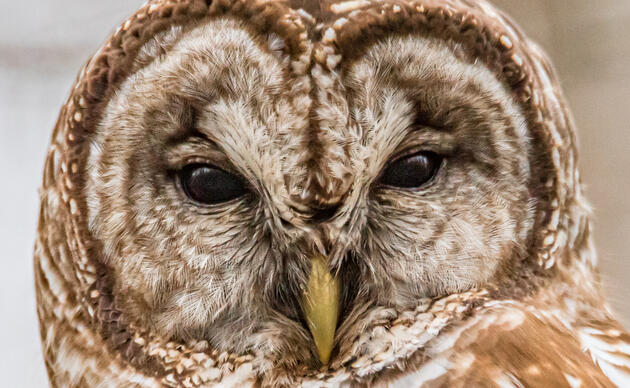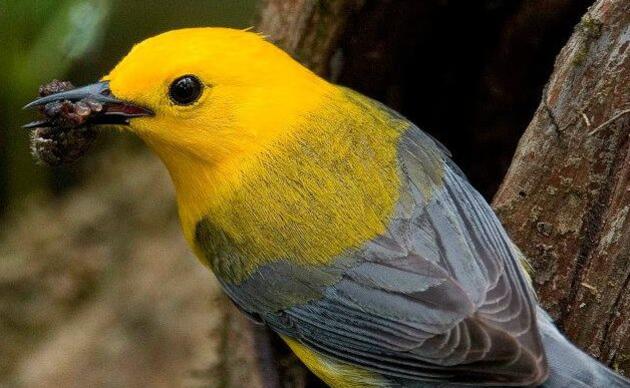You’re sitting on your back porch drinking coffee. It’s an early spring morning, and a brilliant blue bird with a rust-colored chest sits on a fencepost nearby. He emits a soft chittering sound and flies to the ground, grabs an insect, and resumes his post. If you reside in the eastern half of the United States, odds are you are looking at an Eastern Bluebird.
These small thrushes prefer to live in open country with patches of trees from which to perch between bug hunts. Found in meadows, neighborhoods, golf courses and parks, Eastern Bluebirds primarily feast on ground insects like crickets, grasshoppers, beetles and spiders, but often resort to berry eating during the winter months. They are a well-known backyard bird due to their willingness to visit feeders offering mealworms, and in the southeast are enjoyed by bird lovers all year round. The real treat of hosting bluebirds, though, is being able to put up a nest box for them to raise their young.
Eastern Bluebirds are cavity nesters and typically use old woodpecker holes in dead pine or oak trees, but will readily use nest boxes if offered in a suitable area. As spring approaches, now is the perfect time to set up a nest box if you are interested in doing so! But be advised, nest boxes do require maintenance and are a bit more of a commitment than most people realize. Nest boxes should be cleaned before the season starts and after each brood cycle (once the fledglings leave the nest) to prevent the spread of disease and / or parasites. There are a few box specifications that should be considered to provide the best possible nesting opportunity and placement is key! But if you’re able to follow these guidelines, you will help several generations of bluebird families rear their young and experience the pure joy that comes with observing the nesting process. To learn more about nest boxes and how to support your backyard birds during the breeding season, please visit nestwatch.org or visit your local Wild Birds Unlimited store.
Here at Beidler, we actually collect nesting data from our resident Eastern Bluebirds every year and provide several bluebird boxes along our grassland trails. Our certified nest monitors check these boxes twice a week March through July and record all aspects of the nesting cycle, from nest construction to egg laying and hatching and finally the fledglings leaving the nest. This valuable information is then submitted to NestWatch to help scientists better understand how nesting is affected by factors like climate change and how we can continue to support these birds for the future. To learn more, email us at beidler@audubon.org or visit our center to speak with one of our naturalists.
Sources:
https://nestwatch.org/learn/focal-species/eastern-bluebird/
https://www.allaboutbirds.org/guide/Eastern_Bluebird/overview





